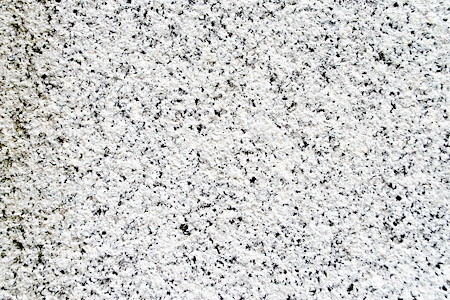Quartz vs. Granite: Picking the Right Countertop for Busy Kitchens

If you are planning kitchen remodeling in St. Charles, MO, you are likely weighing quartz against granite for your new counters. Each surface looks beautiful, but they behave differently when life gets hectic with school nights, game-day snacks, and weekend guests. To help you choose with confidence, our local team explains real‑world pros and cons and how each option holds up in homes around Main Street, New Town, and neighborhoods off Zumbehl Road. If you want a guided selection as part of your project, our kitchen remodeling experts at St. Charles Kitchens and Baths can walk you through samples and finishes.
What busy St. Charles kitchens ask from a countertop
Family kitchens here work hard. Hot pans move from stove to island. Kids spill sports drinks. Winter soups bubble for hours, then someone slides a sheet pan out of the oven and sets it down fast. A good countertop should resist stains, shrug off chips, clean quickly, and still look great when the whole crew gathers after a Lindenwood game or a morning at the Heritage Museum.
Quartz at a glance
Quartz is an engineered surface made from ground natural quartz plus resins and color. It is nonporous, so liquids have trouble soaking in. Color patterns are consistent, which makes it easier to match across long runs and large islands. It is strong and flexible, which helps reduce chipping during daily use.
Granite at a glance
Granite is a natural stone cut from quarries and polished. Every slab is one of a kind, with unique veining and movement that can make your island a focal point. It is very heat tolerant and dense, but it is porous and needs sealing on a schedule to keep stains out. Many homeowners love the organic look and the cool feel under hand.
Durability and daily messes
Think about the messes that show up in your home. Tomato sauce, coffee, and wine can stain if they sit. Quartz repels most spills because it does not have pores for liquid to travel into. Wipe it and move on. Granite resists stains well once sealed, yet unsealed areas or worn sealer can allow dark spots to appear near the sink or around the coffee station.
Seal granite on a regular schedule to protect against stains. Your fabricator will recommend an interval that fits your finish and lifestyle. You do not need to reseal quartz. For both surfaces, use a mild, stone-safe cleaner and a soft cloth to keep the shine.
Heat, light, and appliances
Granite handles high heat better than quartz. You still should use trivets on any surface, but granite is the safer bet for those quick pan set-downs during holiday baking marathons. Quartz can mark or scorch from sudden, extreme heat because of the resins that hold it together. Never set a red-hot pan directly on quartz. Place a trivet between the pan and the counter, especially near the range.
Sunlight matters too. Many St. Charles kitchens have bright afternoon light, especially in open-plan homes in New Town or along Fox Hill. Prolonged, intense UV can fade certain materials over many years. Interior use is generally fine for both, but if you have a big west-facing window, consider lighter colors that hide faint expansion lines and fingerprints.
Style and resale in St. Charles neighborhoods
Appearance often decides the winner. Quartz offers clean, predictable patterns that pair well with shaker cabinets in fresh renovations and with modern fixtures at the Streets of St. Charles. Granite brings movement and depth that feels right at home in historic houses near Frenchtown. If you plan to sell in the next few years, either surface can boost appeal when paired with a balanced palette and good lighting. Ask to see full slabs in natural light before you approve your order. Small samples can hide large-scale pattern shifts.
Maintenance and warranties
Quartz’s low upkeep is a major selling point for families that cook often and clean fast. Granite’s care is simple too once sealing becomes a routine. Many quartz brands carry written warranties, and reputable stone yards support granite with their own service promises. Confirm the warranty and who covers any seam or sink cutout issues. Understanding coverage now prevents confusion later.
Sinks, edges, and installation details
The right details raise daily satisfaction. Undermount sinks make cleanup easier with both quartz and granite. Eased, half‑bullnose, and small bevel edges resist damage better than sharp profiles when lunch boxes and cast-iron skillets come swinging by. Large islands may need seams based on slab size and your floorplan. A skilled crew will place seams where they are least visible and color-match the epoxy so lines blend with the pattern.
Lifestyle match: which one fits your home?
- Busy family with constant cooking and quick cleanups: Quartz keeps stains at bay and stays consistent across long runs.
- Avid entertainer who often uses hot trays and Dutch ovens: Granite’s heat tolerance provides a wider safety margin.
- Baker who loves a cool work surface: Many prefer the natural feel of polished granite for pastry work.
- Design-first homeowner who wants a statement island: Either works, but dramatic granite movement can become the centerpiece.
If you want the most predictable color and fewer maintenance steps, quartz is the practical pick. If you love one-of-a-kind stone and want maximum heat resistance, granite may be worth the added care. There is no single right answer for every household, and that is why local guidance matters. To see both options in the context of your cabinets, floors, and lighting, talk with our team during your next kitchen remodeling design meeting.
Cleaning reality: what it takes on weeknights
Imagine a Tuesday after soccer practice. You spill marinara, someone drops a spoon with a bit of turmeric, and the oven timer beeps. With quartz, a quick wipe usually erases the evidence. With sealed granite, blot and wipe, then check once more under bright light. Either way, choose cutting boards, use trivets, and keep a simple routine. These small habits keep both materials looking new for years.
Edges, finishes, and color choices that work in St. Charles
Polished finishes reflect light and feel sleek, great for cozy winter evenings when the sun sets early. Honed or matte finishes hide small scratches but may show more fingerprints on darker colors. Whites and light grays brighten kitchens with limited natural light, common in some split-level homes, while warmer earth tones pair nicely with brick accents found near historic Main Street.
When you compare colors, bring a cabinet door and a floor sample to the showroom. View them together under warm and cool light. If your kitchen opens to a patio or sunroom, check how the slab looks near a window. Color shifts are normal from one end of a natural granite slab to the other, and quartz lots can vary slightly too. That is why final selections should be made on the actual material you will receive.
Health and food safety
Nonporous quartz makes it harder for liquids to sit in place, which supports a cleaner prep zone. Properly sealed granite resists absorption well, and modern sealers are long lasting. In either case, regular cleaning with a gentle, pH‑neutral product is smart. Avoid harsh chemicals and abrasive pads that can dull finishes or break down sealers.
Environmental notes
Both surfaces can last for decades when installed correctly, which is the biggest sustainability win. Quartz uses a blend of stone and resin and is fabricated to precise specs, which can reduce waste. Granite is natural and durable, and many local suppliers stock remnants for smaller tops like a baking station or a laundry drop zone. Ask your designer how to maximize yield from your chosen slabs so less material goes to waste.
How we help you choose
Our design process starts with your daily routine. We look at your cooking style, number of helpers in the kitchen, and how much sun the room gets in July. Then we pair samples with your cabinets, backsplashes, and flooring so everything flows. If you prefer to explore the full project first, start with kitchen remodeling St. Charles MO to see how selections, layouts, and finishes come together on one plan.
Quick side‑by‑side comparison
- Stain resistance: Quartz excels; sealed granite performs well with routine care.
- Heat handling: Granite tolerates higher heat; quartz needs protection from very hot items.
- Look and pattern: Quartz is consistent; granite is unique and dramatic.
- Upkeep: Quartz is low maintenance; granite requires periodic sealing.
- Resale appeal: Both are desirable when paired with a cohesive design.
A note on seams and large islands
Many St. Charles kitchens feature generous islands for holiday buffets. Extra‑wide tops may require seams based on slab size and access. Skilled installers align patterns, color the epoxy, and polish transitions so seams blend into the field. Ask to see where seams will land on your drawings before fabrication begins. That small preview makes a big difference on installation day.
Ready to pick your winner?
When you live, cook, and celebrate in your kitchen every day, the right countertop should make life easier and more beautiful. If you lean toward low upkeep and consistent color, quartz is a strong match. If you want natural movement and extra heat tolerance, granite may be your favorite. Either way, St. Charles Kitchens and Baths can help you compare real slabs, coordinate edges, and finalize a plan that fits your home and timeline. To get started, call us at 636-916-0333 or book a design consult as part of your next kitchen remodeling project in St. Charles.
